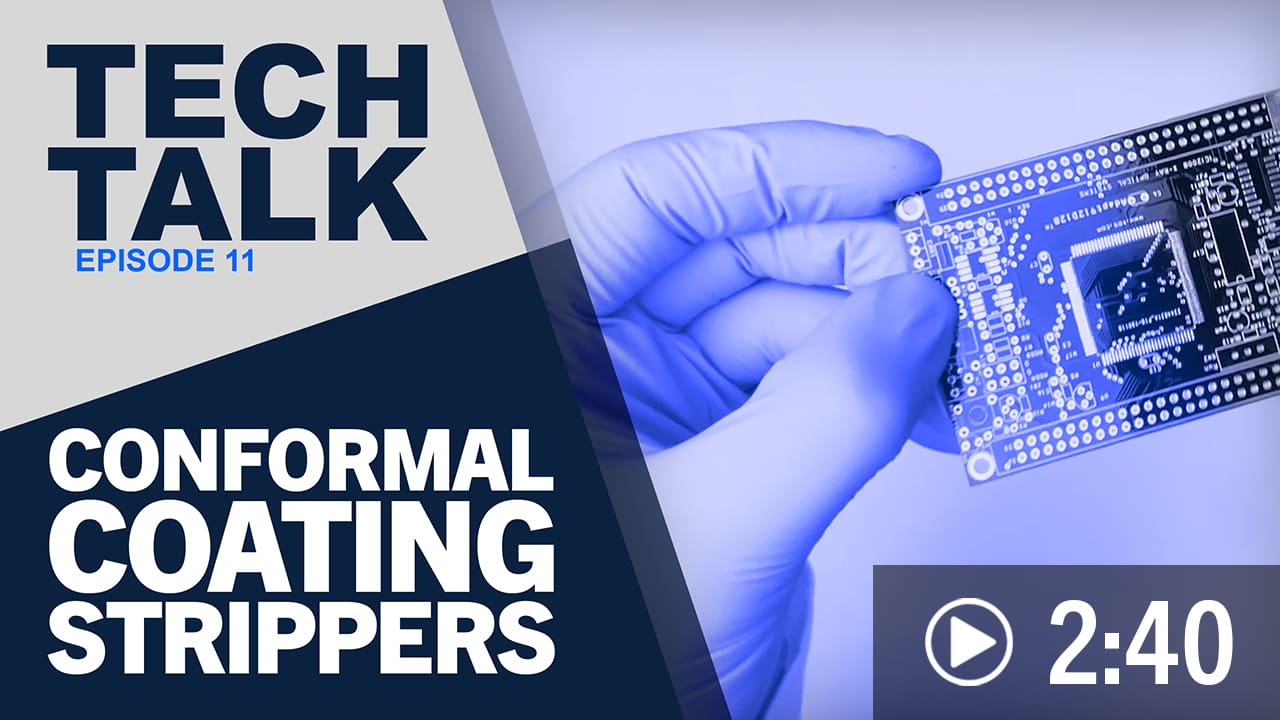Epoxy Potting Compounds
Solder Wire
Epoxy Potting Compounds
Solder Wire

At MG Chemicals, we’re committed to driving innovation and empowering the next generation of scientific pioneers. Our University Project Sponsorship opportunities are tailored to fuel creativity, collaboration, and groundbreaking discoveries within the academic sphere. If you’re a university educator, researcher, or student looking to transcend the boundaries of chemistry and technology, we invite you to explore the endless possibilities with MG Chemicals.
Learn More




Showing all 3 results
Home > Products > Conformal Coatings > Conformal Coating Strippers
MG Chemicals offers conformal coating strippers that are helpful when rework or repair is necessary. These strippers are very effective at removing many different types of coatings, including acrylics, alkyds, polyurethanes, silicones, and some epoxies. Exposure time for conformal coating removal will depend largely on the inherent chemical resistance of the coating and will vary with different chemistries. While most acrylics will require no more than 30 seconds, some epoxies may need several hours for successful removal.
8309 – Conformal Coating Remover – Liquid stripper effective for coating removal on large surfaces
8309-P – Conformal Coating Remover Pen – Liquid stripper in pen format effective for spot conformal coating removal
8310A – Conformal Coating Remover Gel – Stripper gel effective for spot removal of coatings and some adhesives

It depends on the coating’s chemistry. For thermoplastic materials such as acrylics or silicone coatings, the cured film can easily be removed with common solvents like acetone or n-butyl acetate. For more durable thermoset coatings such as polyurethane, epoxy and UV cure, use a more aggressive stripper like MG’s 8309 liquid or 8310A gel. The table below summarizes most effective methods for removing coatings of different chemistries.
| Material | Method |
| Acrylics | Easily removed using common solvents like Ketones (e.g., acetone) or esters. |
| Polyurethanes | Can be removed using 8309 or 8310A stripper. Takes 5-10 minutes. |
| Silicones | Easily removed using common solvents like acetone or esters. |
| Epoxy | Remove using 8309 or 8310A stripper. May take up to 2 hours. |
| UV Cure | Remove using 8309 or 8310A stripper. May take several hours. |
| Parylene | Must be removed with micro-abrasion. Very difficult. |
| Ultra-Thin | Easily removed using common solvents like Ketones |
| Styrenated Block co-polymer | Easily removed using common solvents like Ketones |